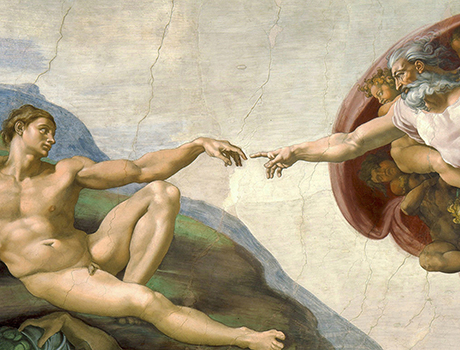
What do the frescoes in the Sistine Chapel mean?
The German writer Goethe wrote: "Without having seen the Sistine Chapel one can form no appreciable idea of what one man is capable of achieving". And how right he was. This room, one of the most famous art rooms in the world, offers sublime aesthetic experience that stands out during the tour of the Vatican Museums.
And it is impossible to think about the Sistine Chapel without considering the figure of Michelangelo Buonarroti, who said that "Small things make perfection, but perfection is no small thing"; the perfection that he sought in his masterpiece through his various frescoes. Read on to learn more about the works of art that cover the Sistine Chapel.
The frescoes in the Sistine Chapel
The vault of the Sistine Chapel was painted only by Michelangelo upon the request of Pope Julius II between 1508 and 1512. Due to the difficulty of the surface where the work was painted and the fact that the artist made the work alone, the realization of these frescoes is considered in itself an impressive artistic feature.
The ceiling is divided into nine panels, representing scenes from the Book of Genesis. That is: they represent the history of the creation of the world according to the Catholic Church.
The various panels are dedicated to:
- The Separation of Light and Darkness
- The Creation of the Sun, Moon and Earth
- The Separation of Land and Water
- The Creation of Adam
- The Creation of Eve
- The Temptation and Expulsion
- The Sacrifice of Noah
- The Great Flood
- The Drunkenness of Noah
At the same time, these panels are accompanied by the figures of the prophets (Zechariah, Joel, Isaiah, Ezekiel, Daniel, Jeremiah and Jonah) and the Sibyls (Delphi, Eritrea, Cumae, Persian and Libyan), so it is a union of elements of Christianity with some of paganism. This characteristic makes Michelangelo's work even more interesting.
And as if all this were not enough, in the corners of the ceiling are represented the four stories of the salvation of Israel, completing a work as beautiful as it is complex and which deserves to be given a good deal of time during a tour of the Vatican Museums to be able to appreciate it in its entirety.
The most important work of the Vatican Museums
Among all the sections that make up the vault of the Sistine Chapel, stands out The Creation of Adam, one of the most widespread artistic images worldwide. In this fragment we can see, on the left, Adam lying languidly, and on the right, the figure of God.
Although it is a fresco that at first sight seems symmetrical, an analysis of the positions and attitudes of both figures shows that this is not the case. This shows that Michelangelo was not only a magnificent sculptor, but also knew how to portray the figures and their movement on the plane
Another interesting feature of this fresco is that it also includes the figure of Eve, in the background: she is under the arm of God, protected and waiting her turn to be created.
Due to the size of the fresco, and the height that separates the floor from the vault, it becomes difficult to identify all the details of these frescoes. For this reason, we recommend that you to book a guided tour of the Vatican Museums with an expert guide. Find out about our options and book your tour today.
